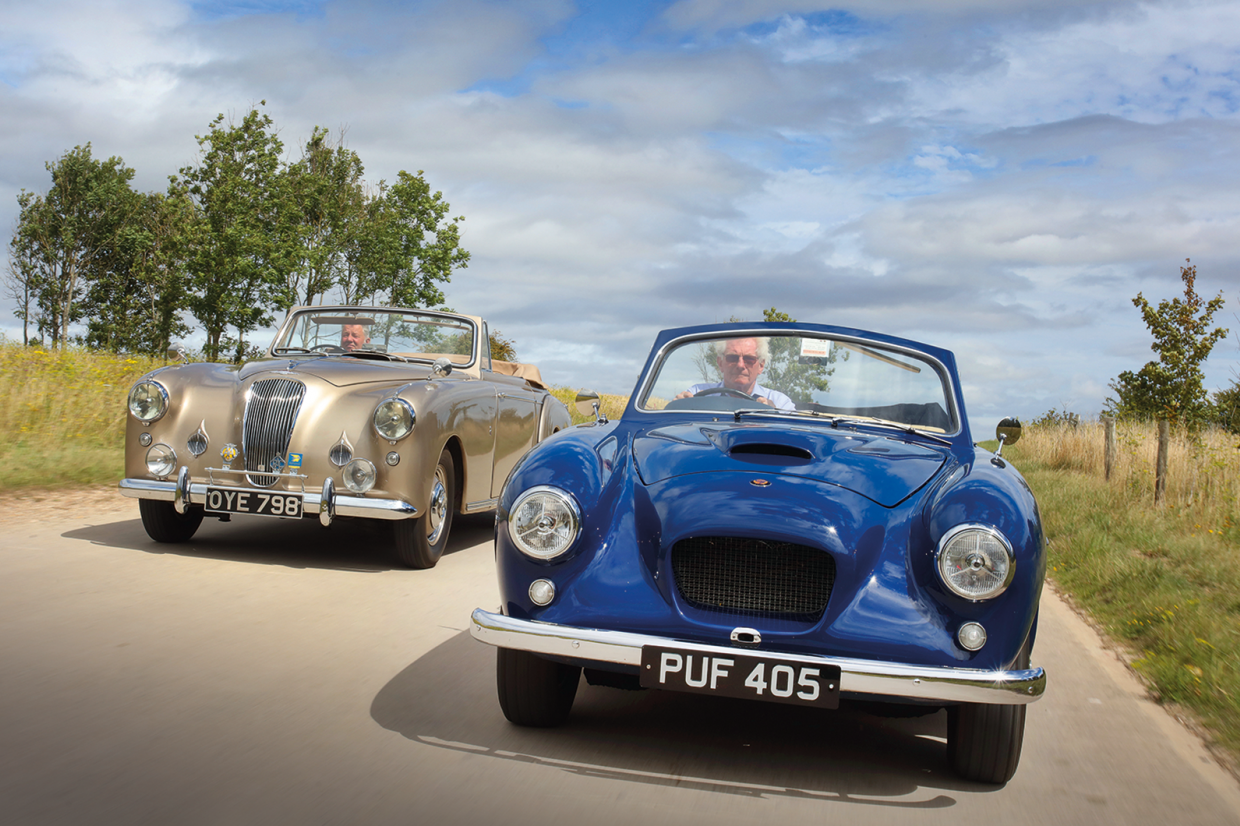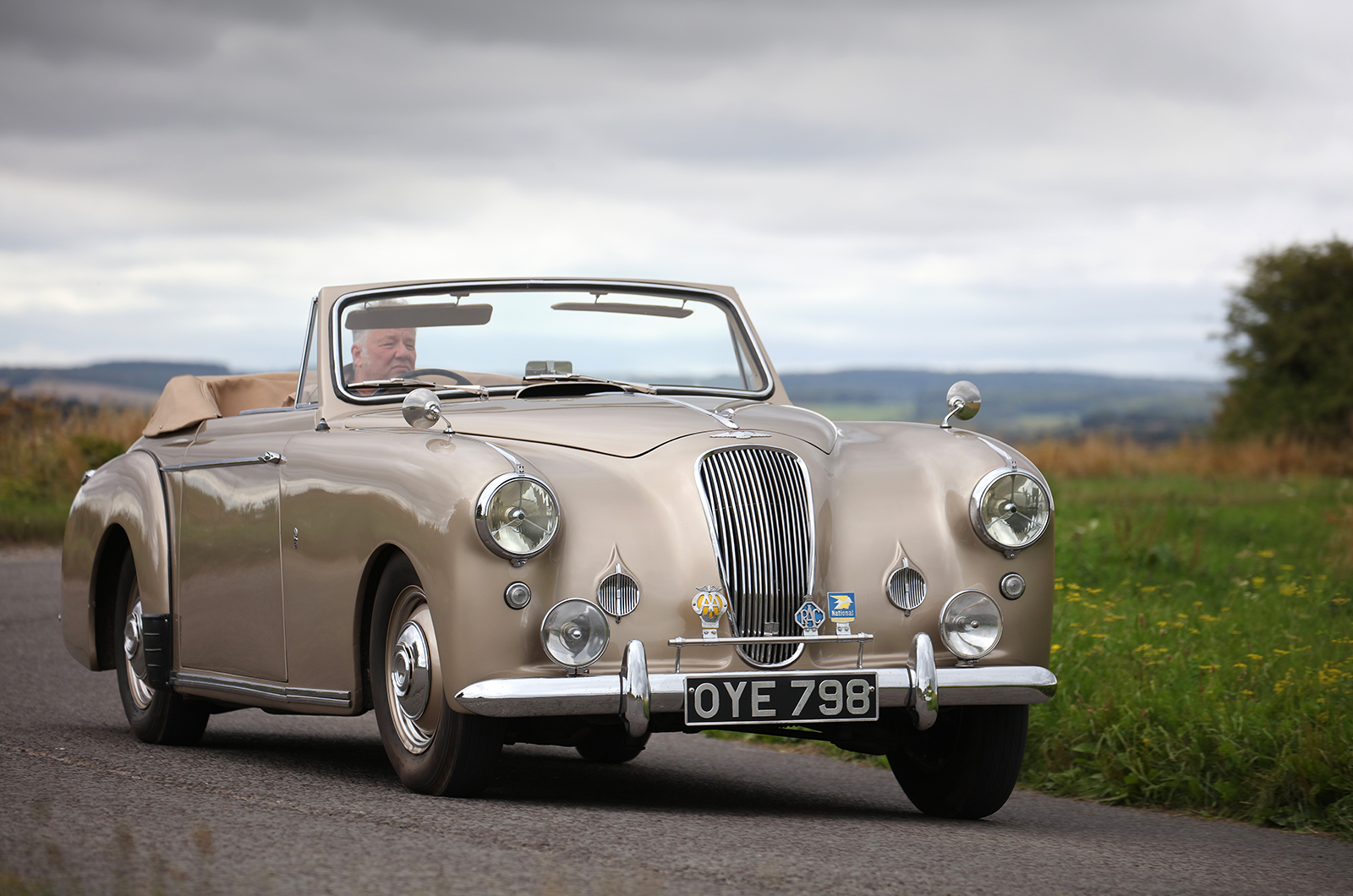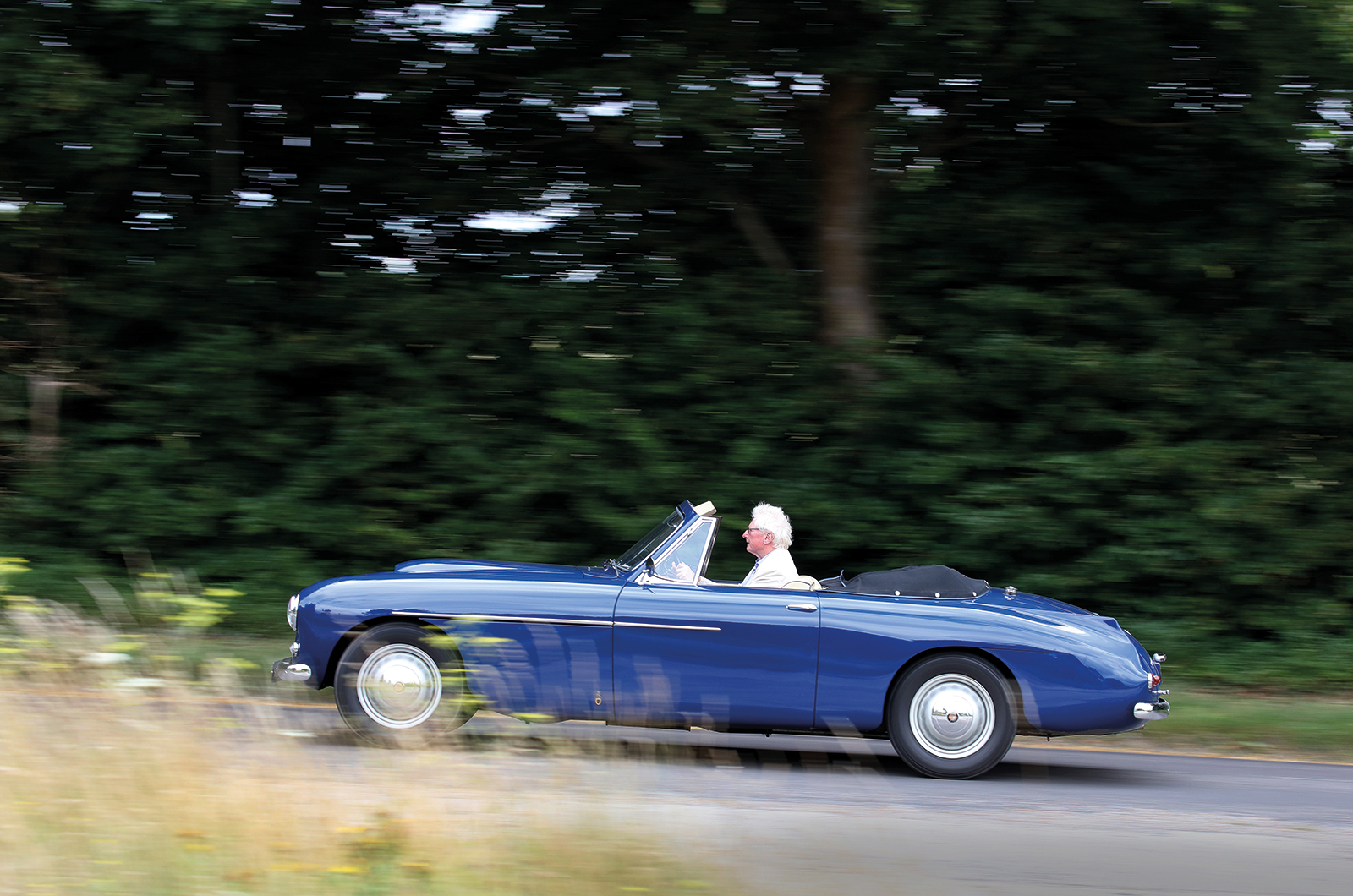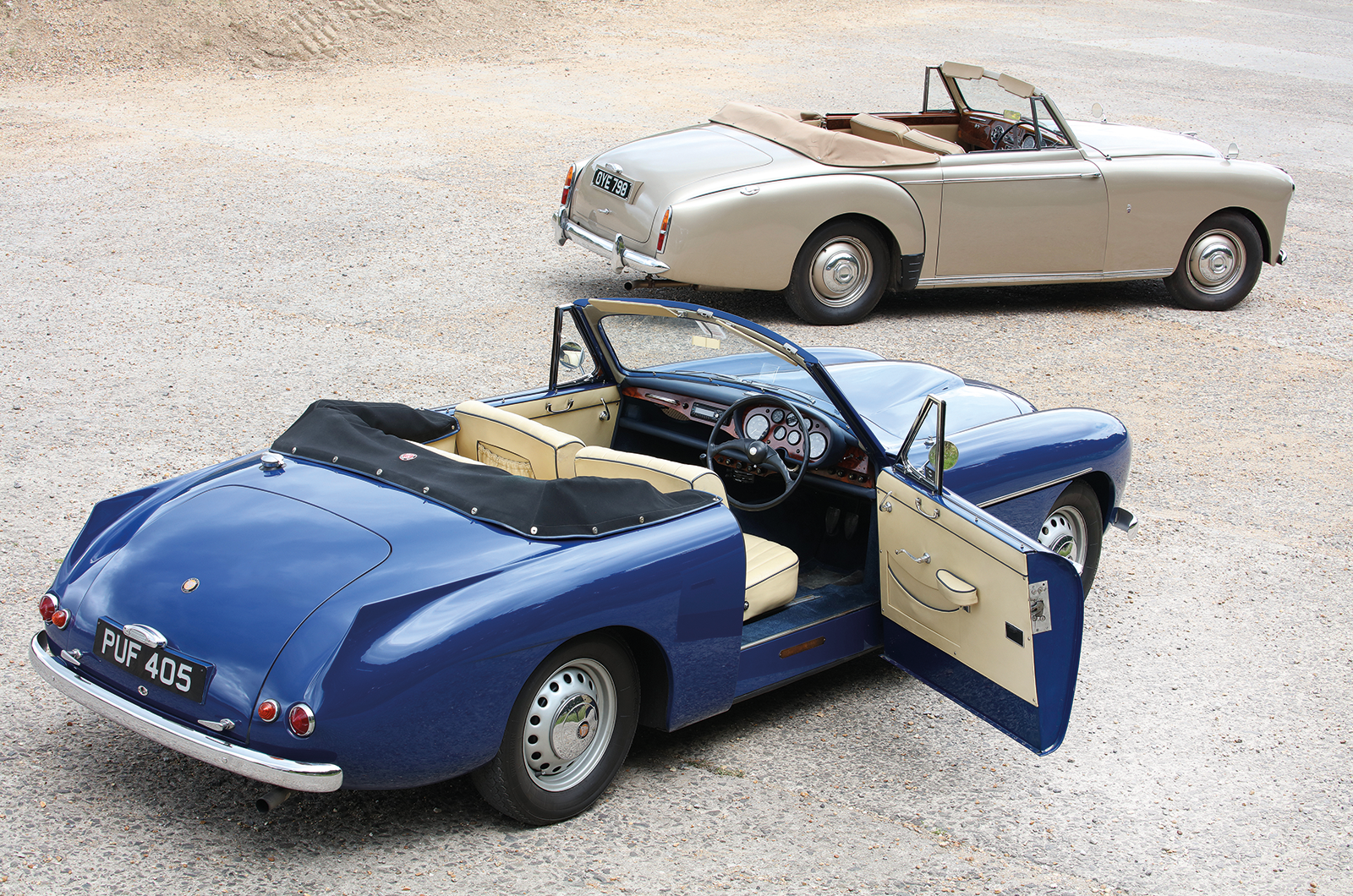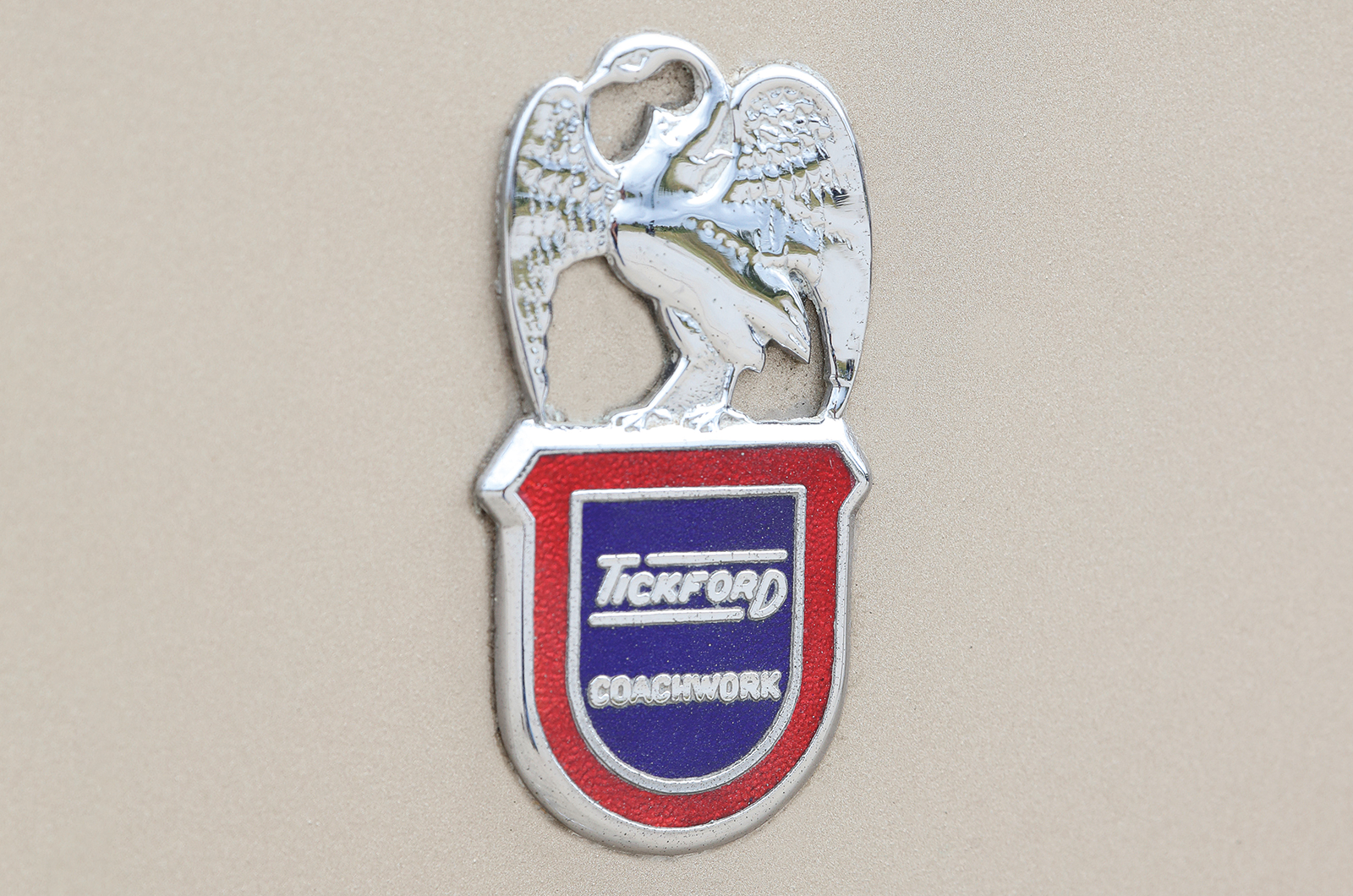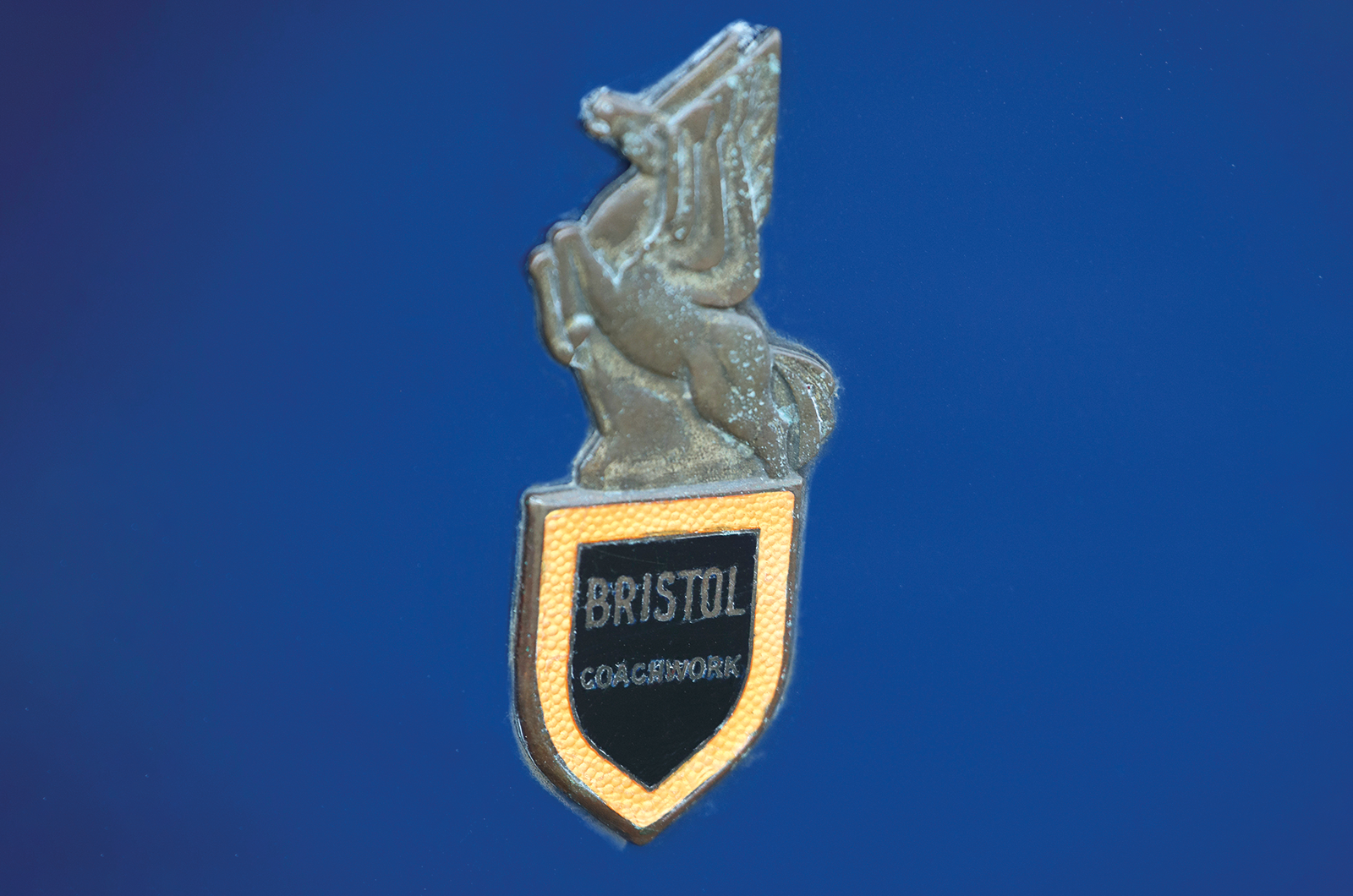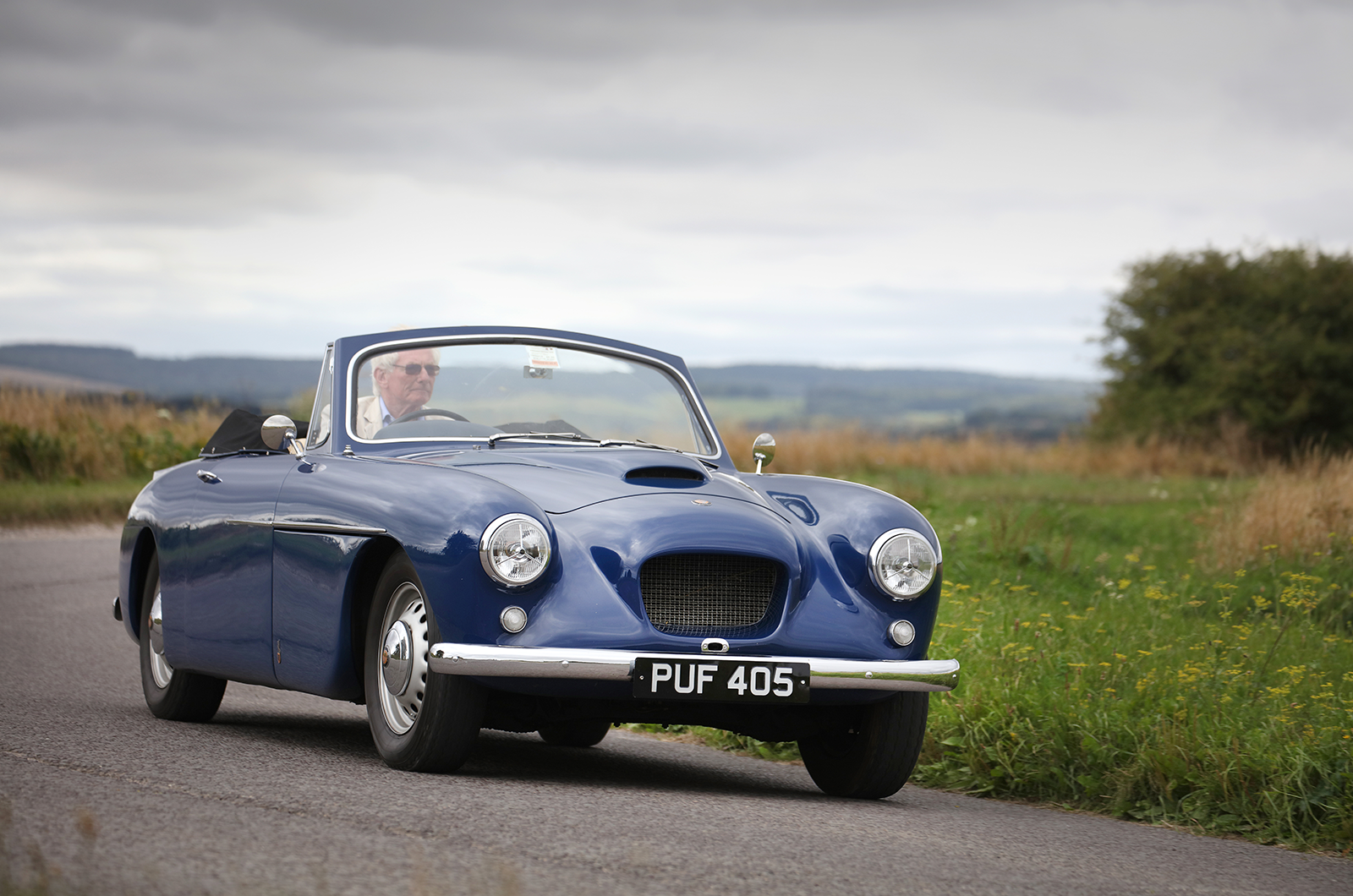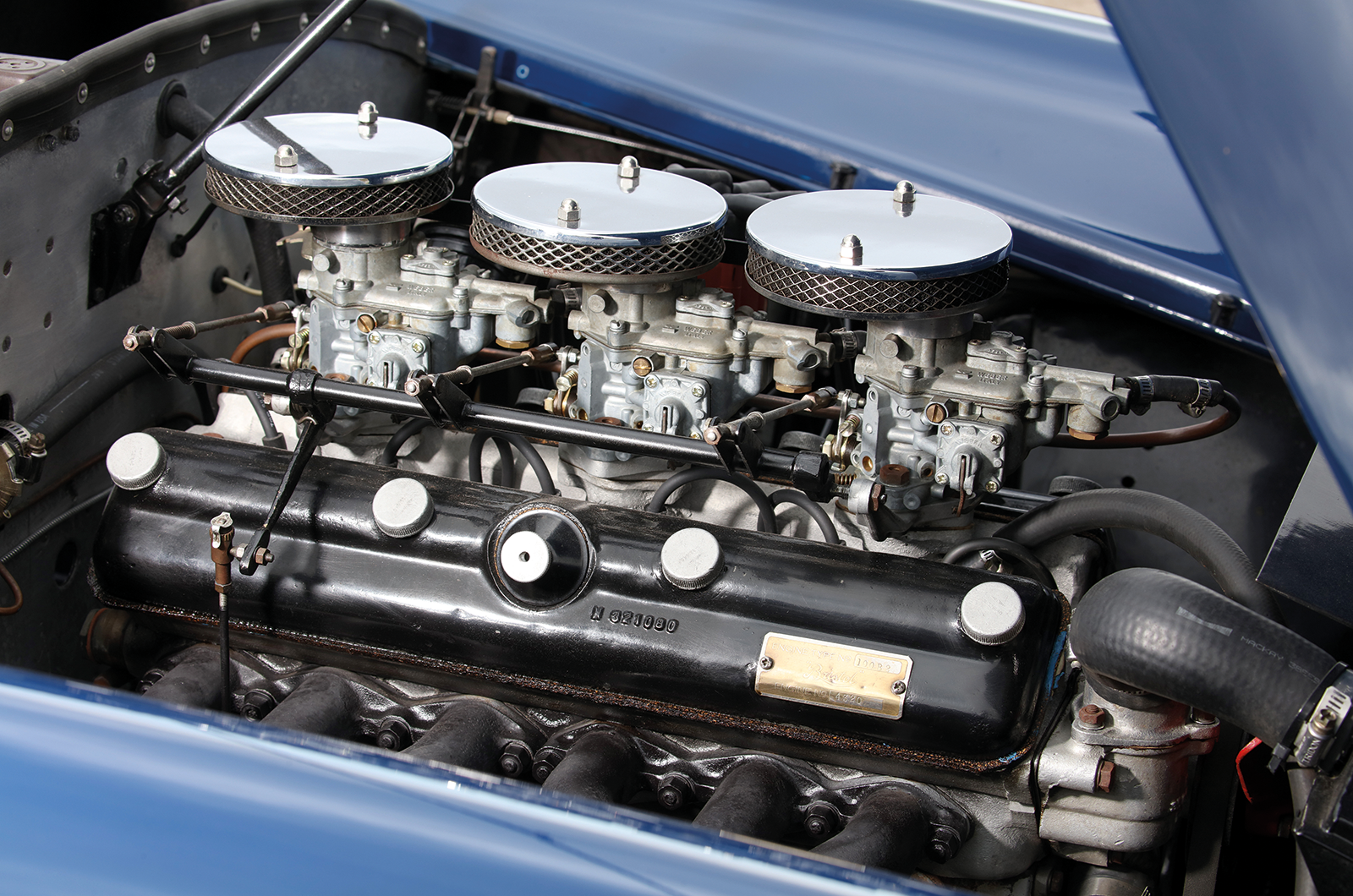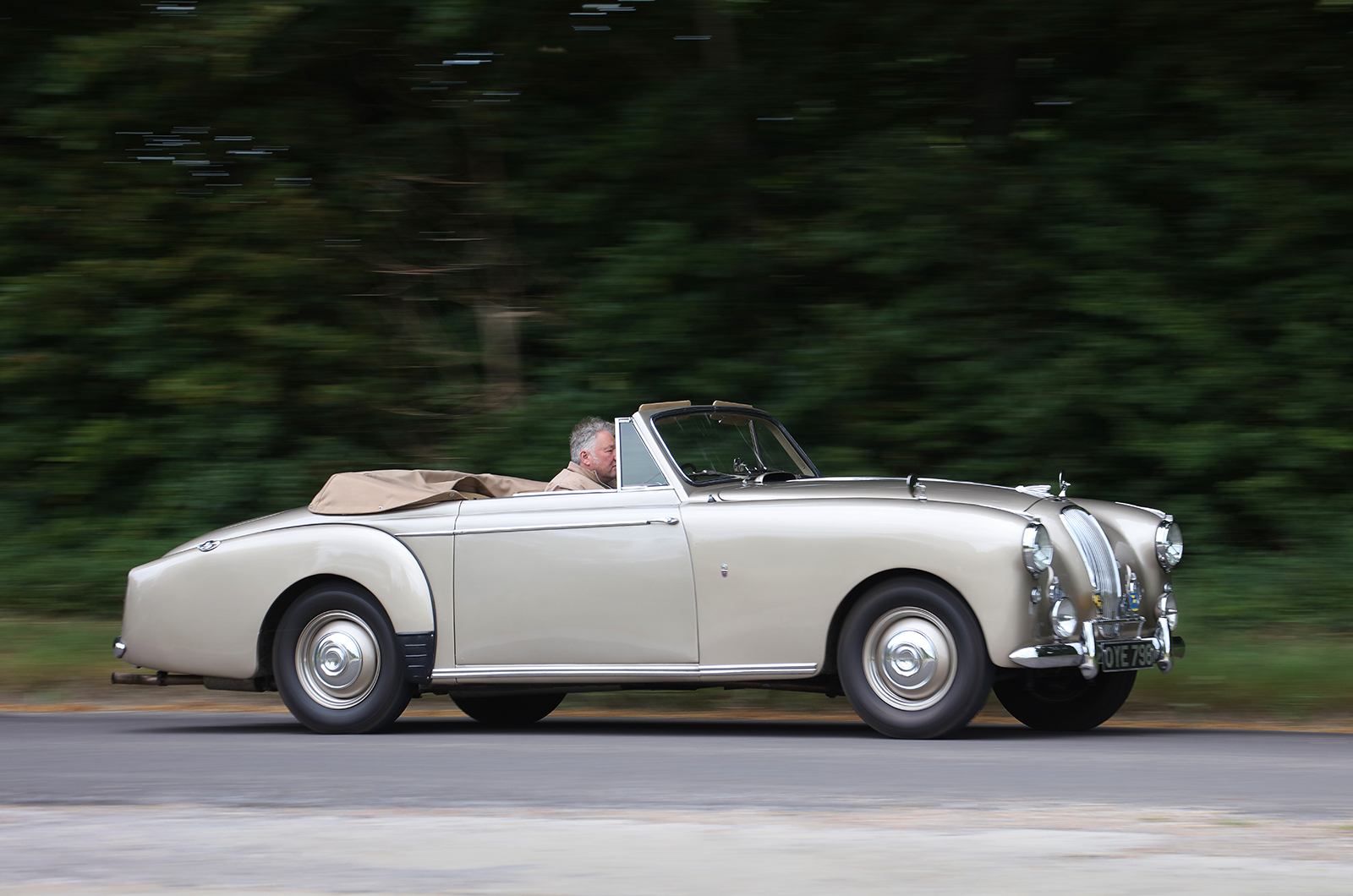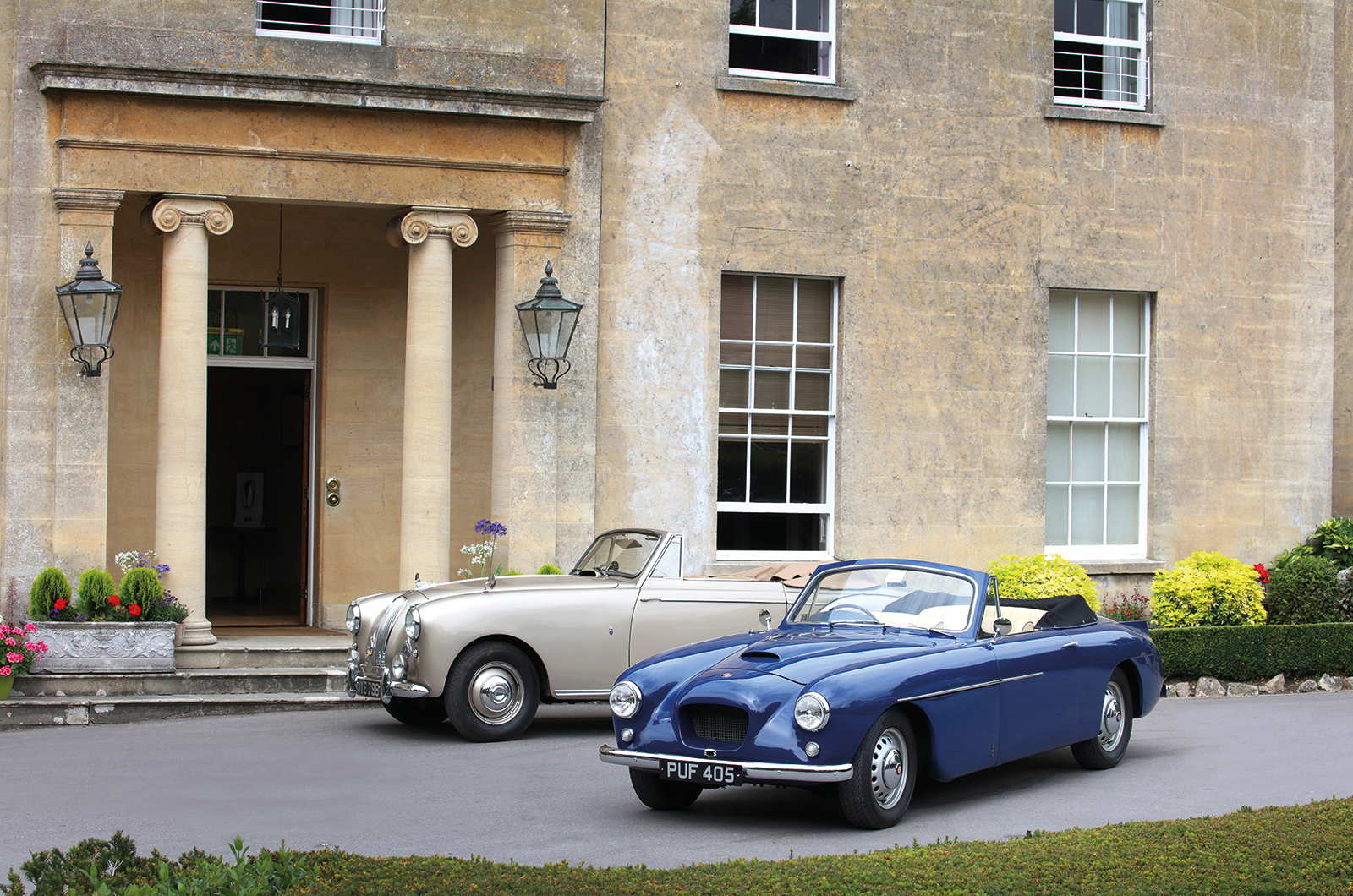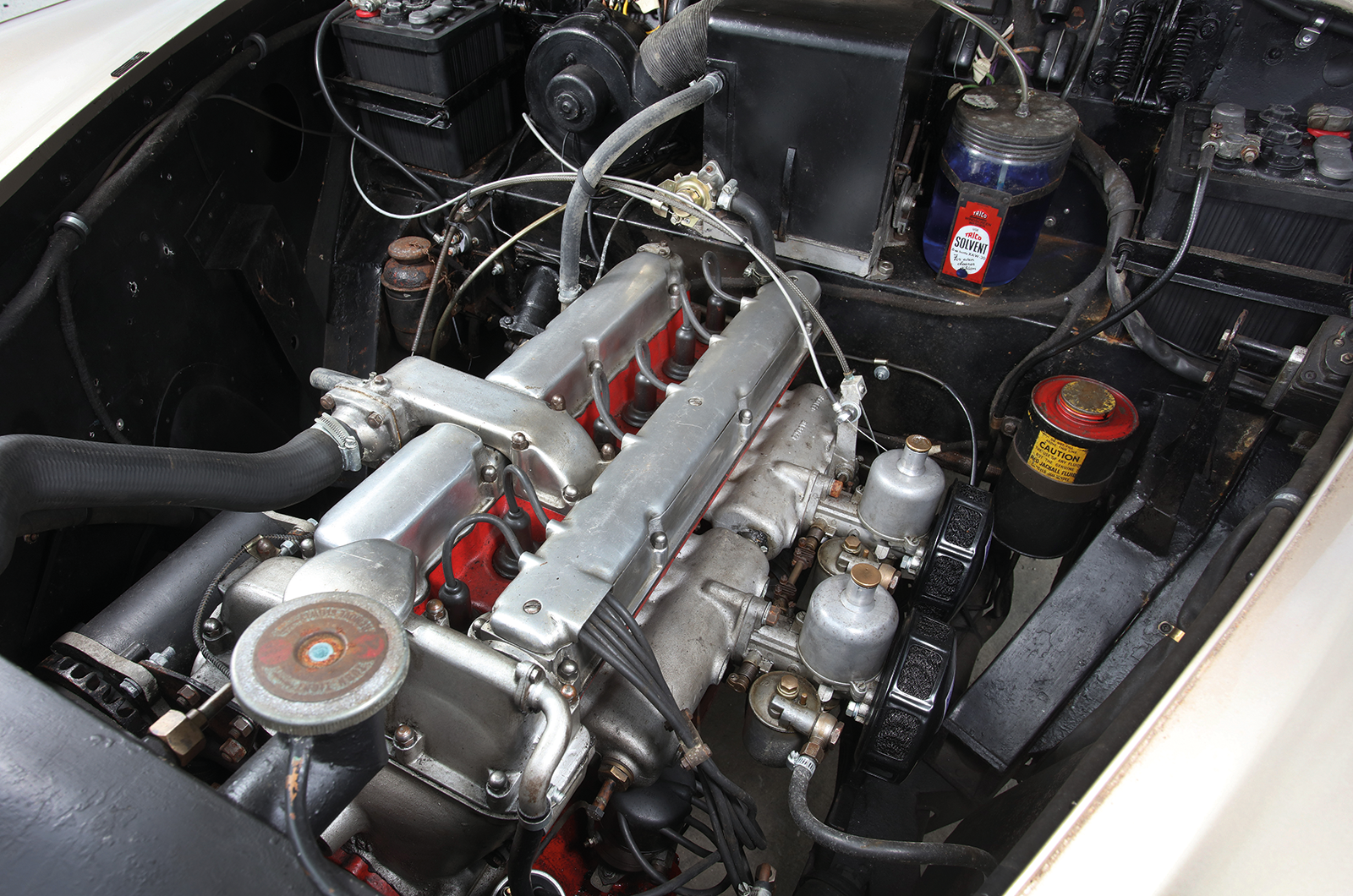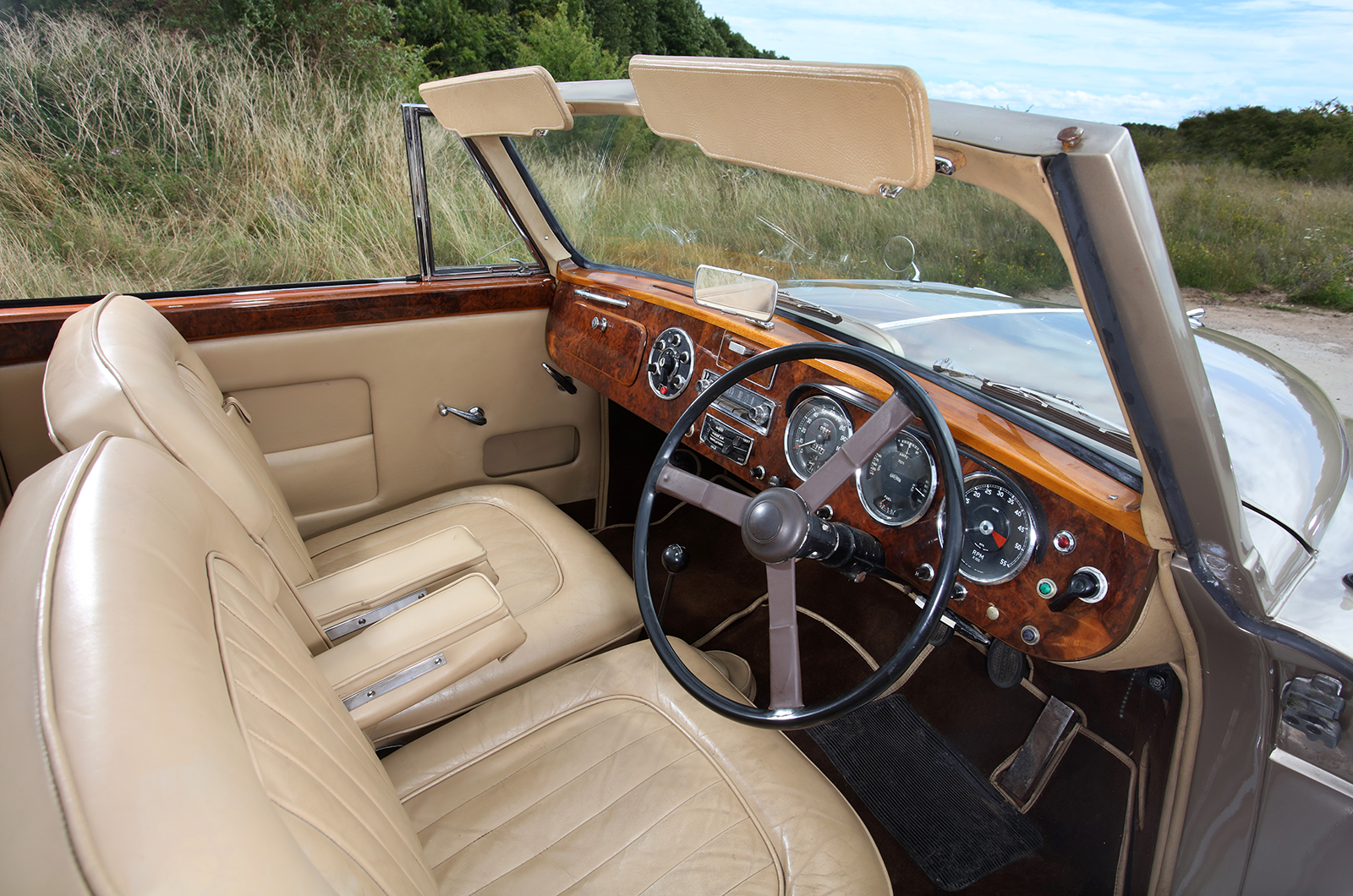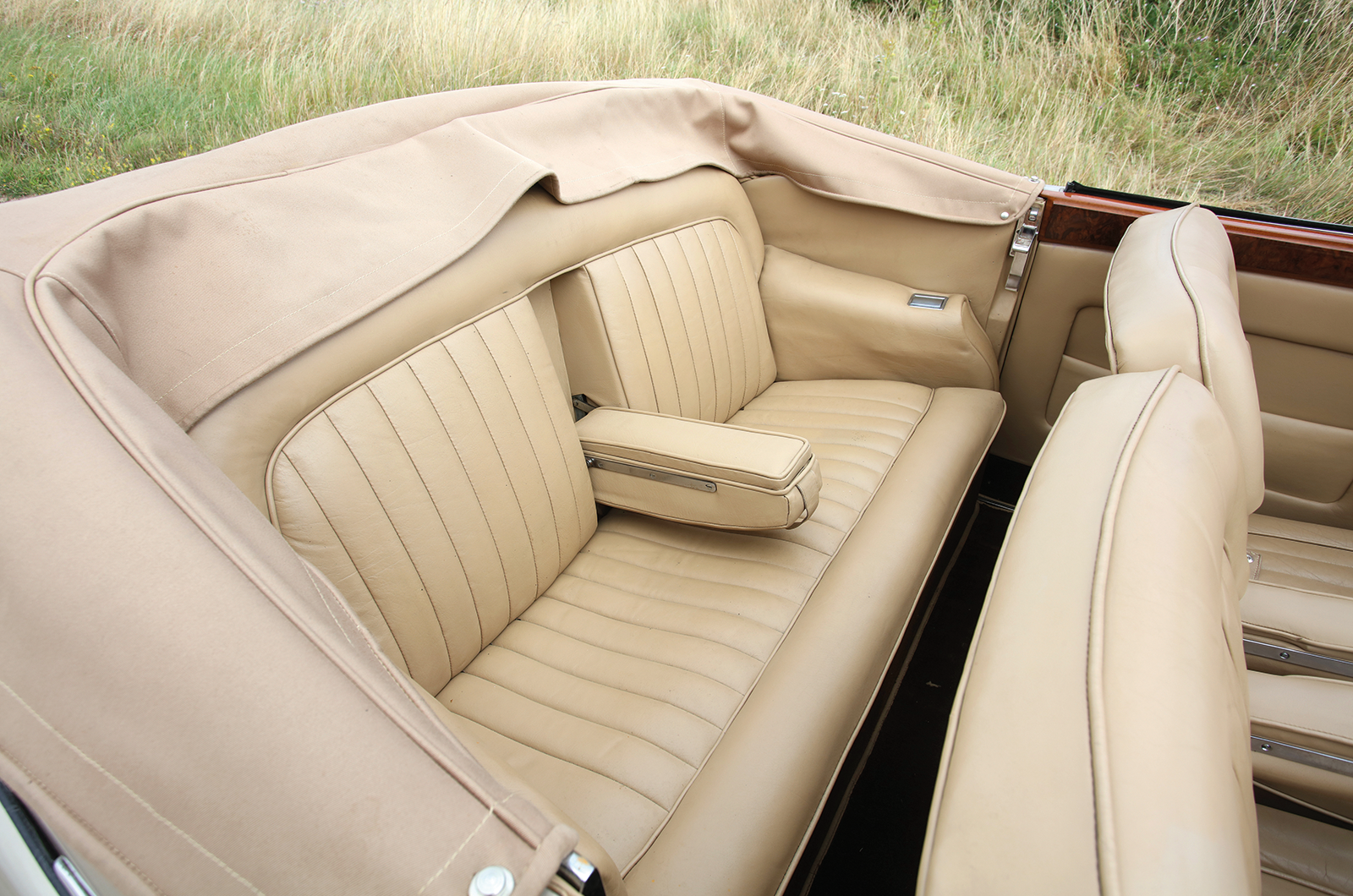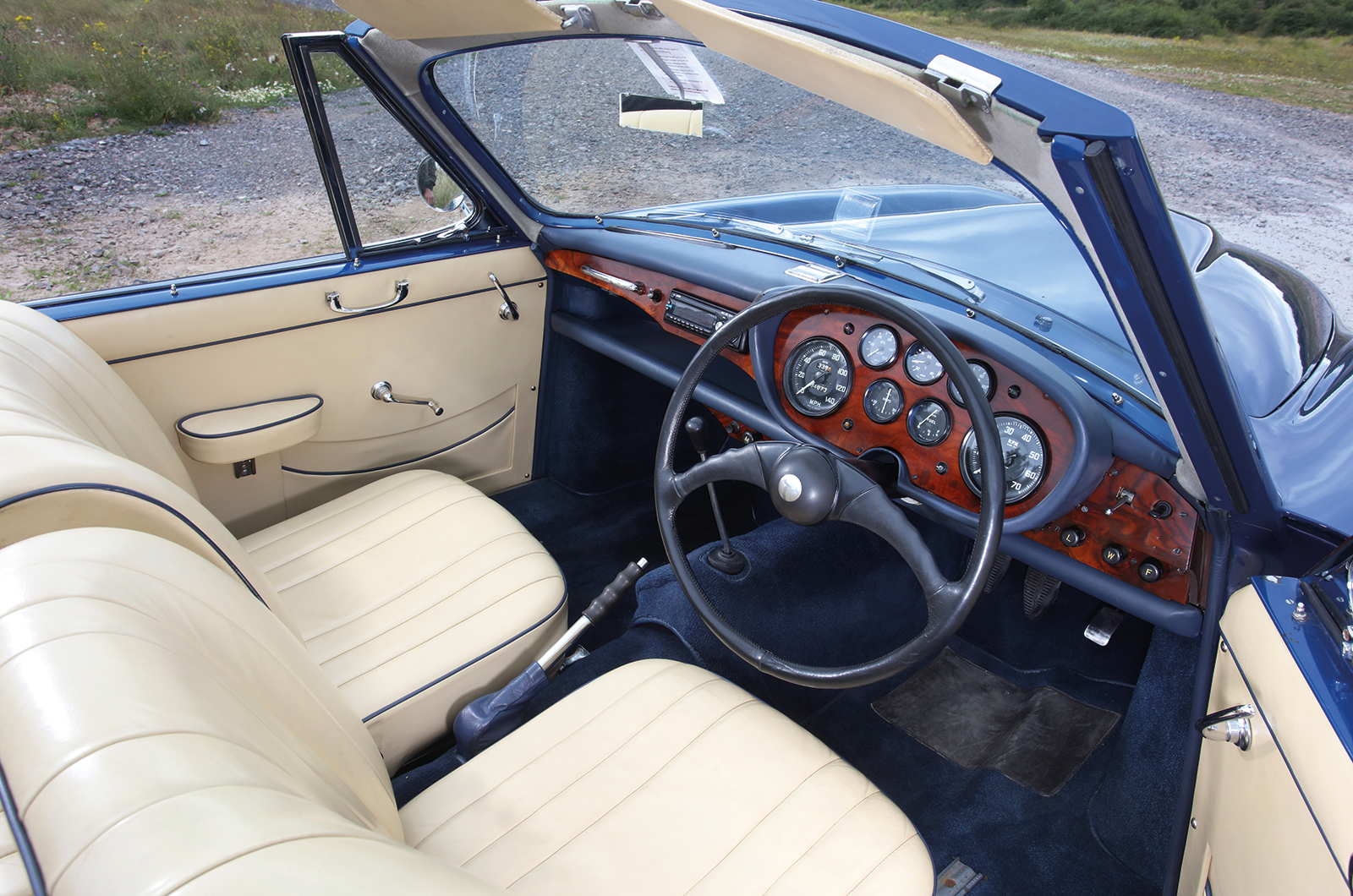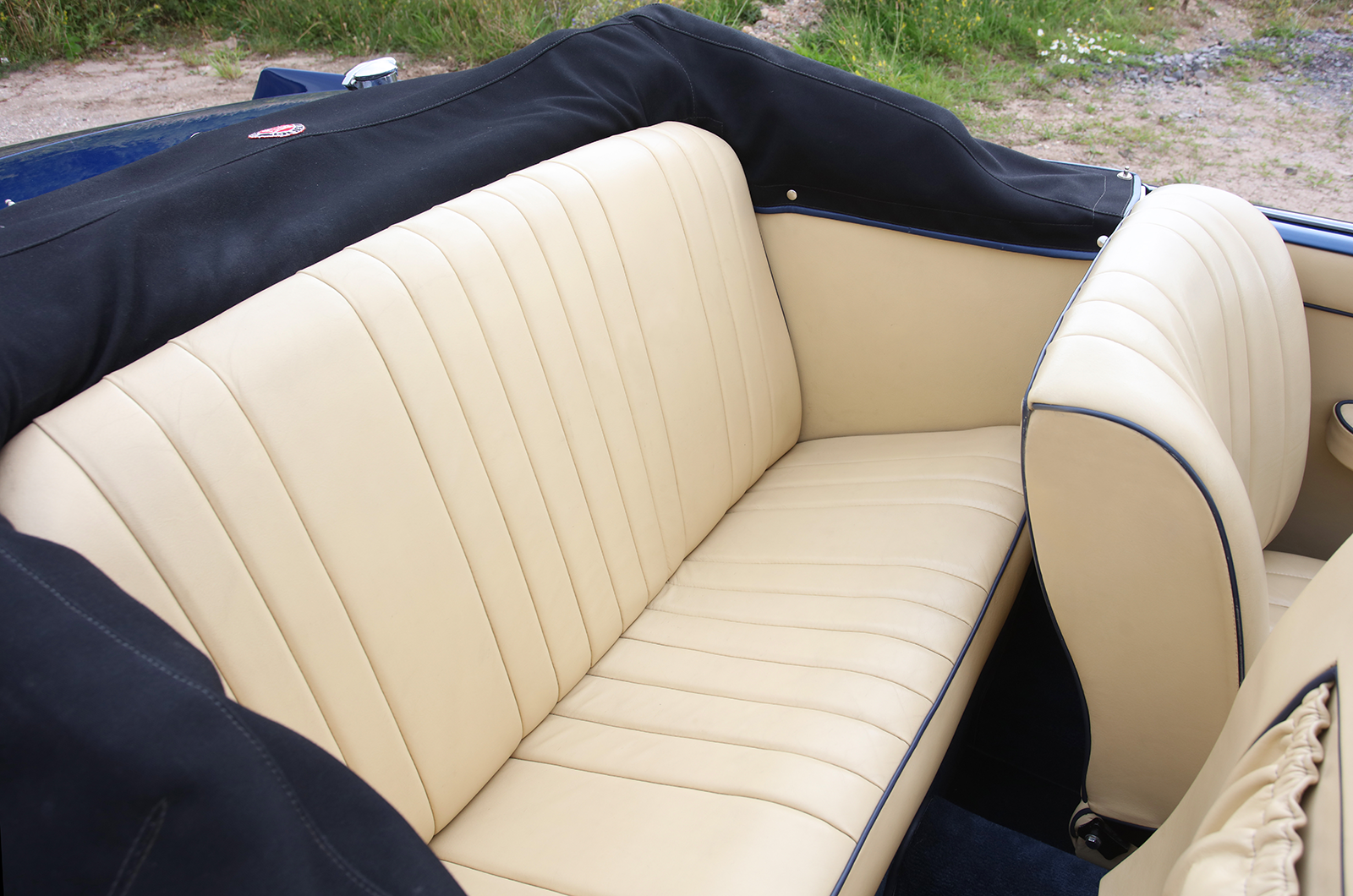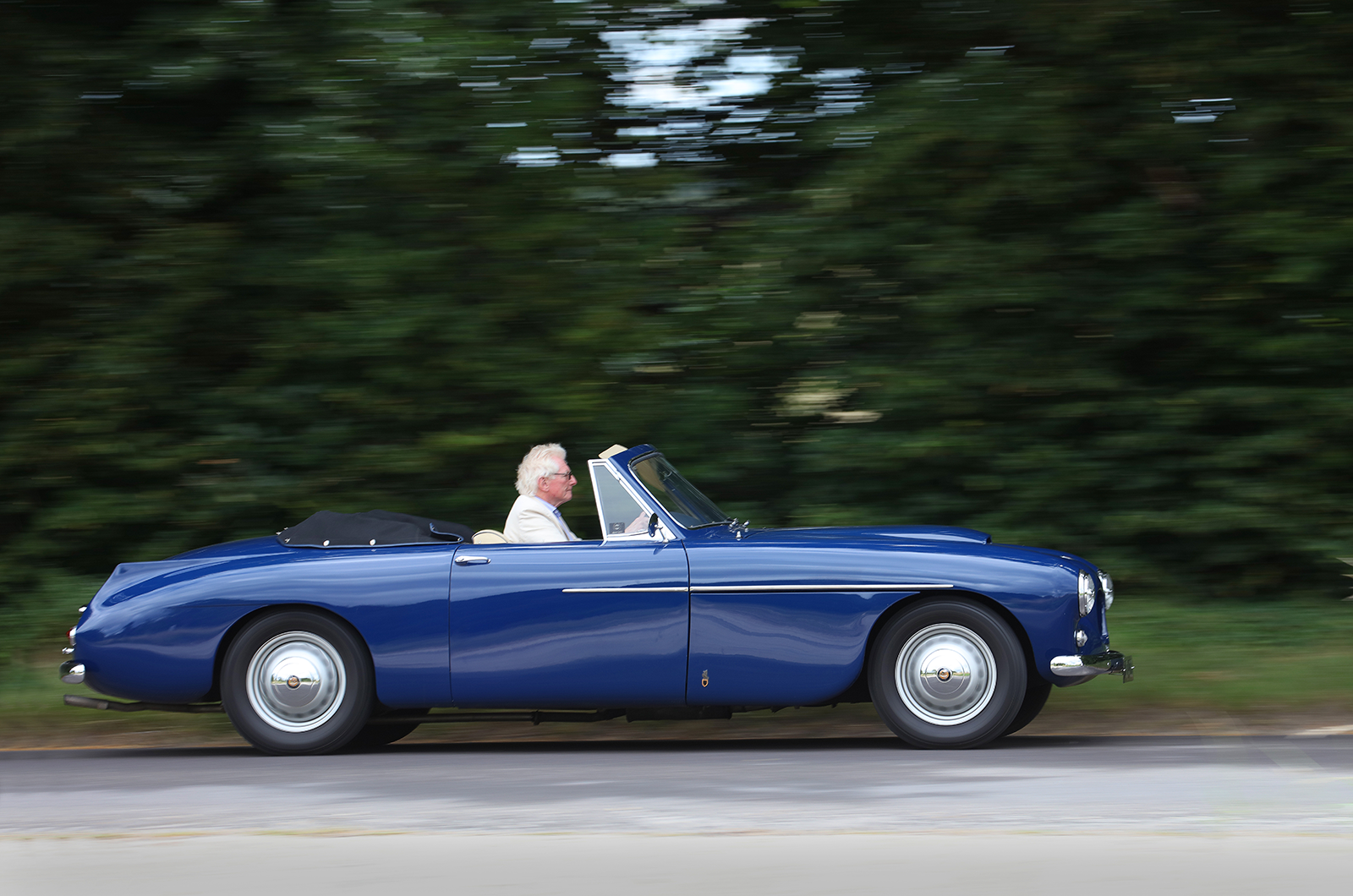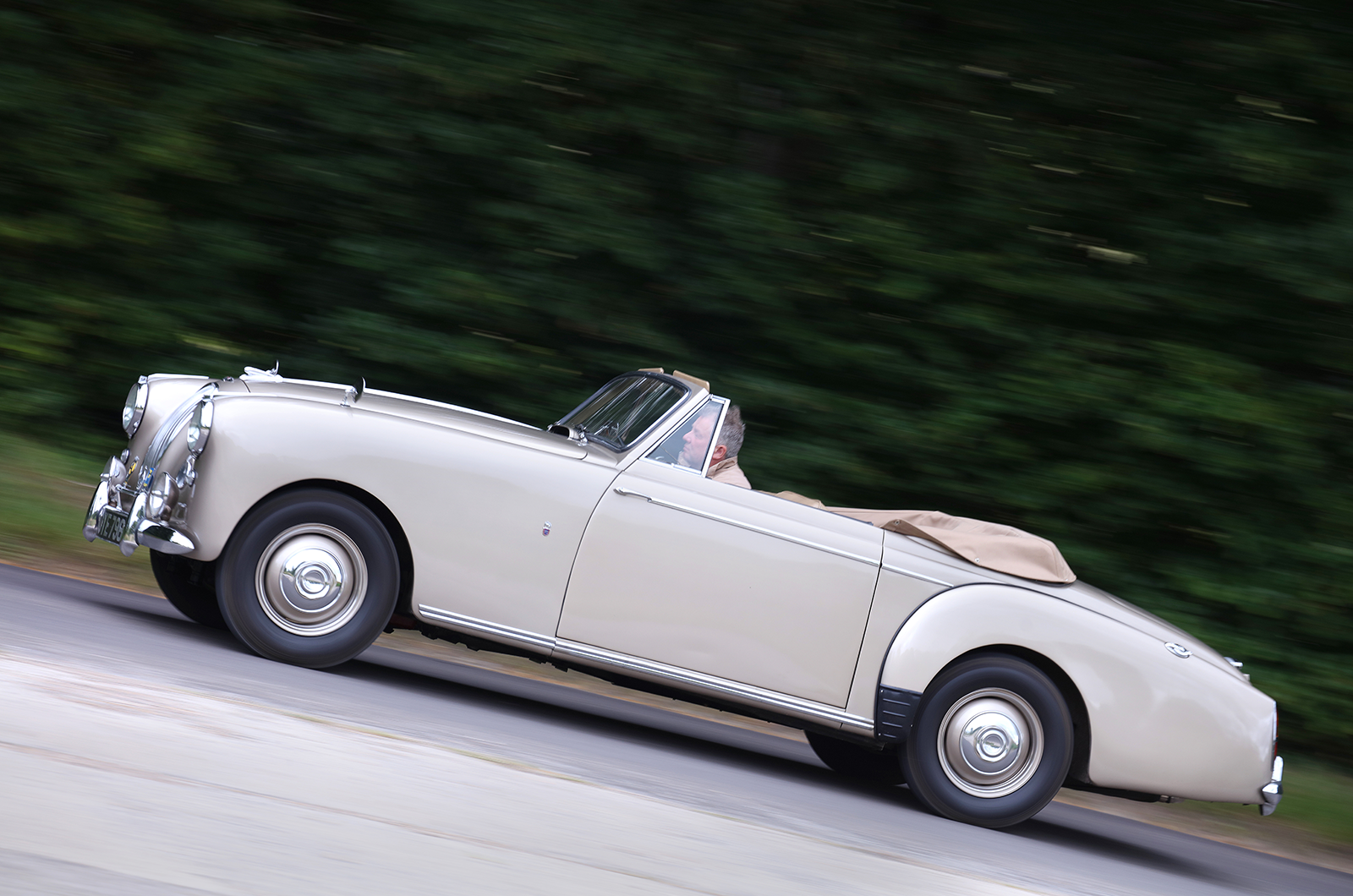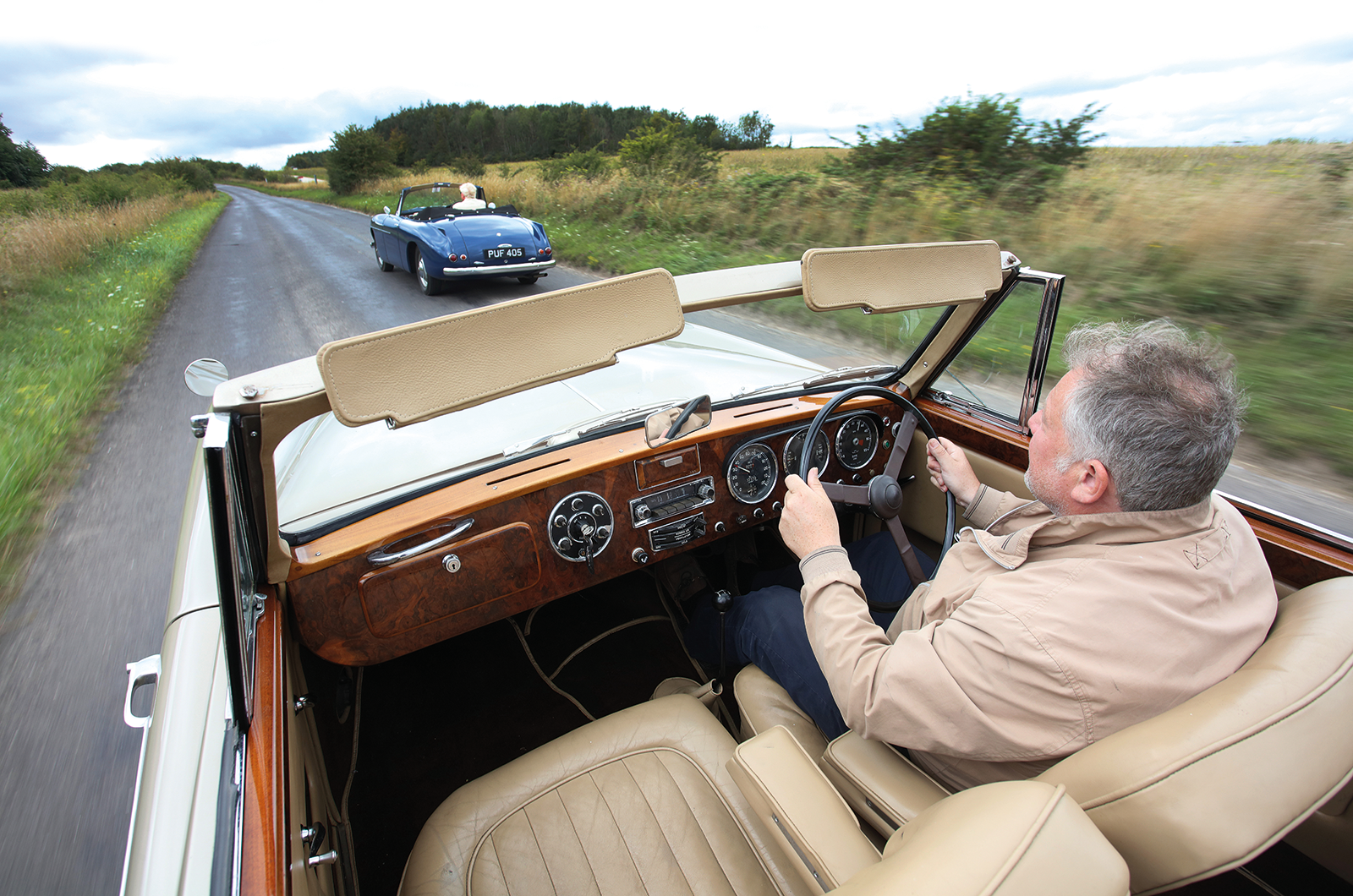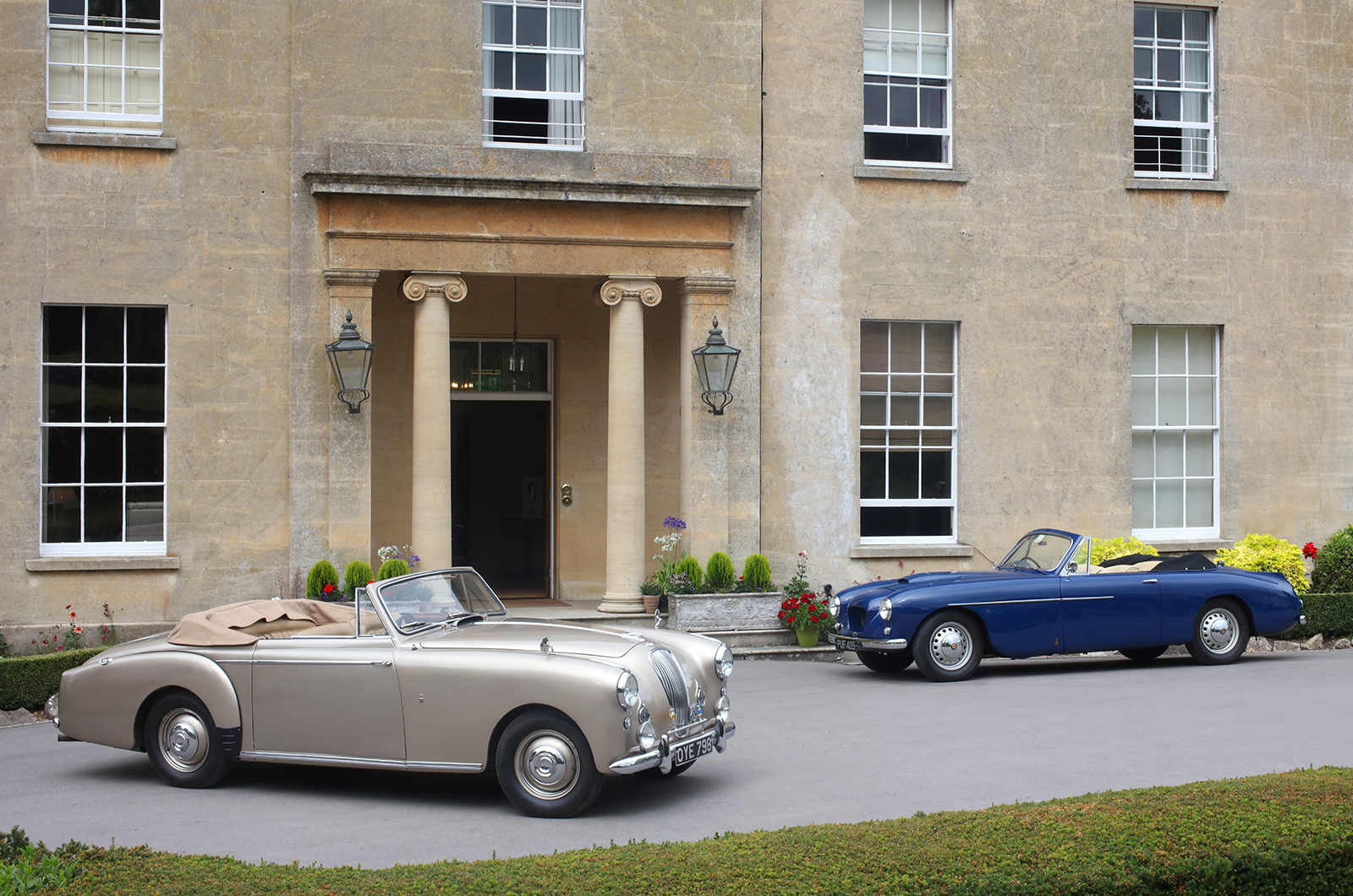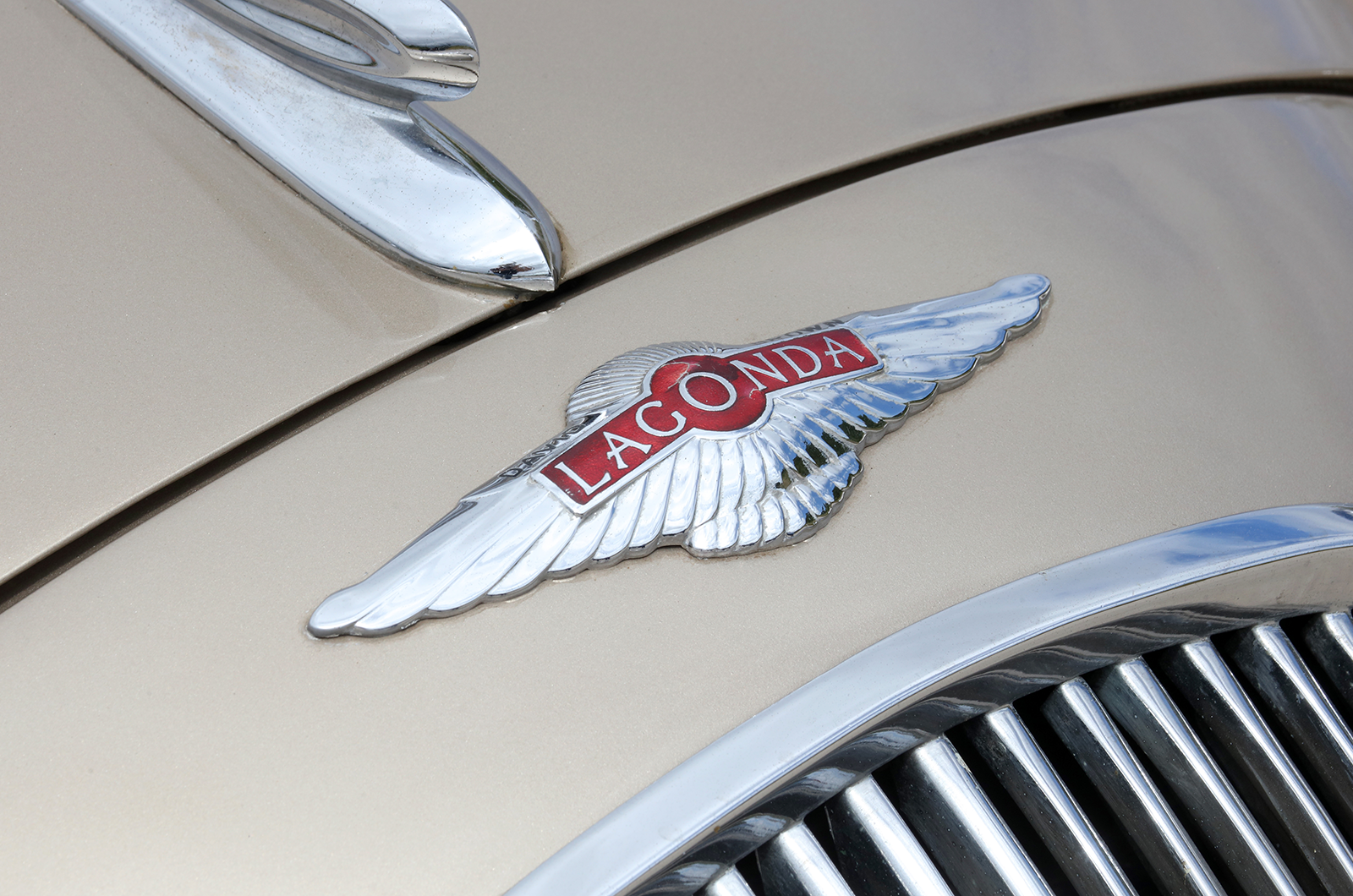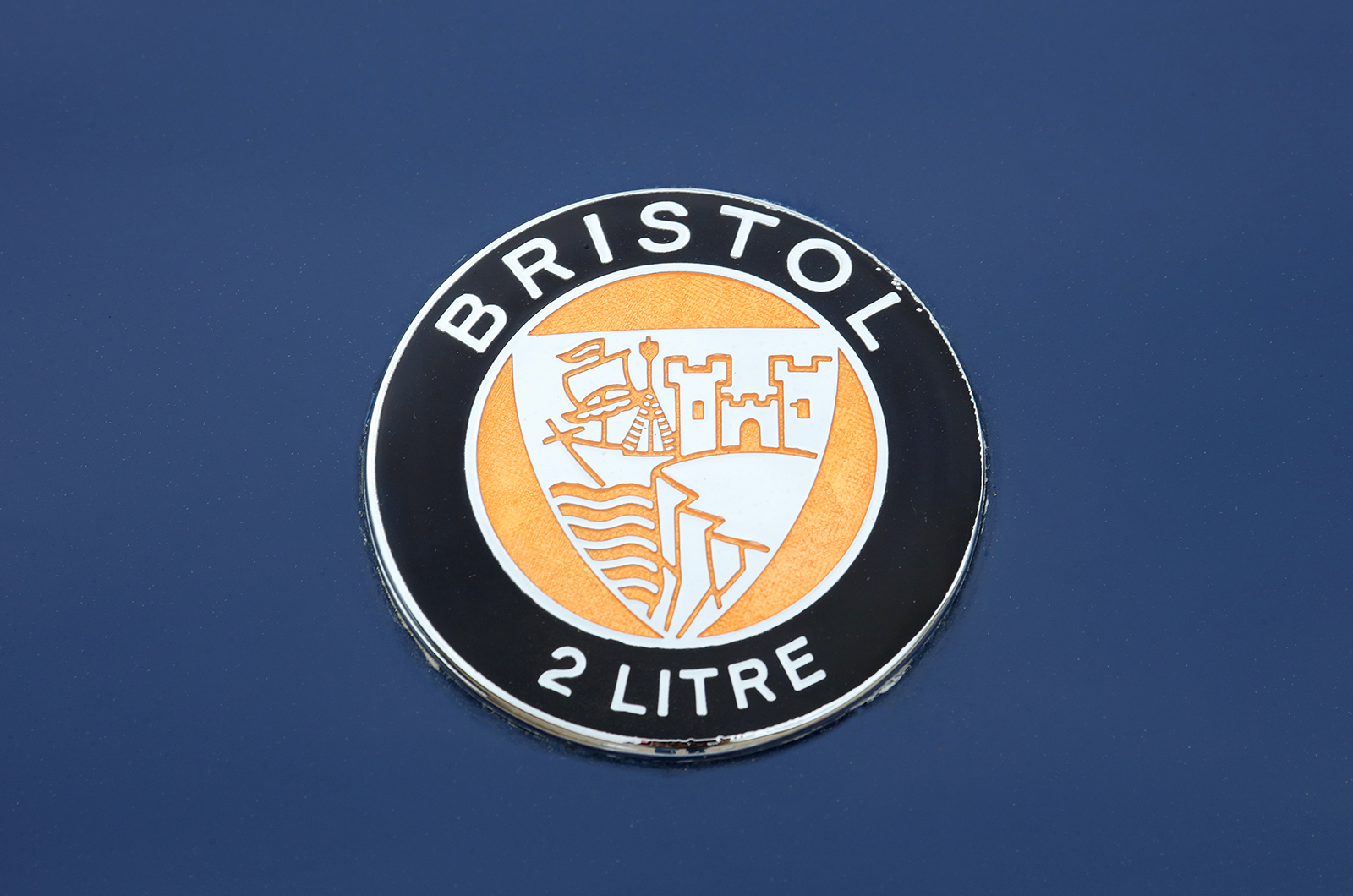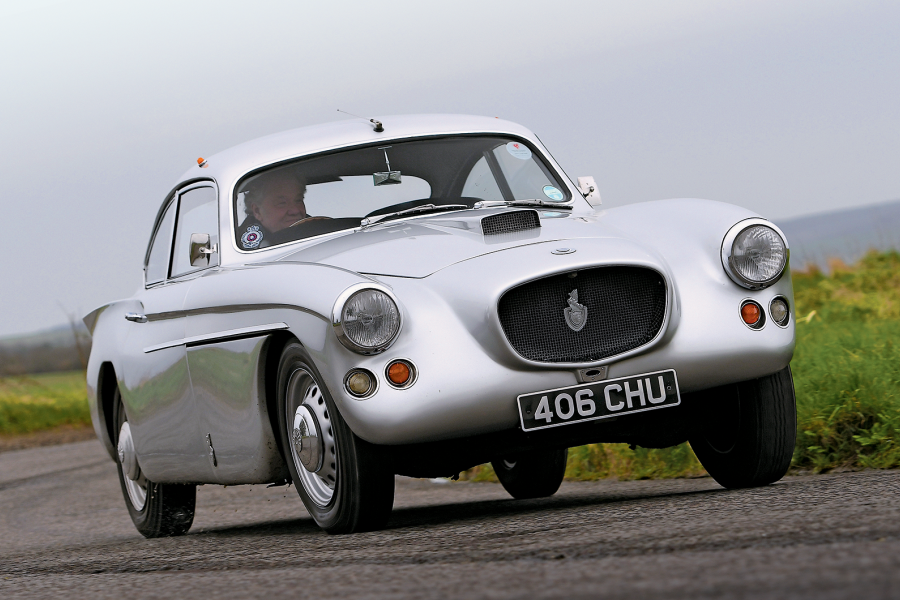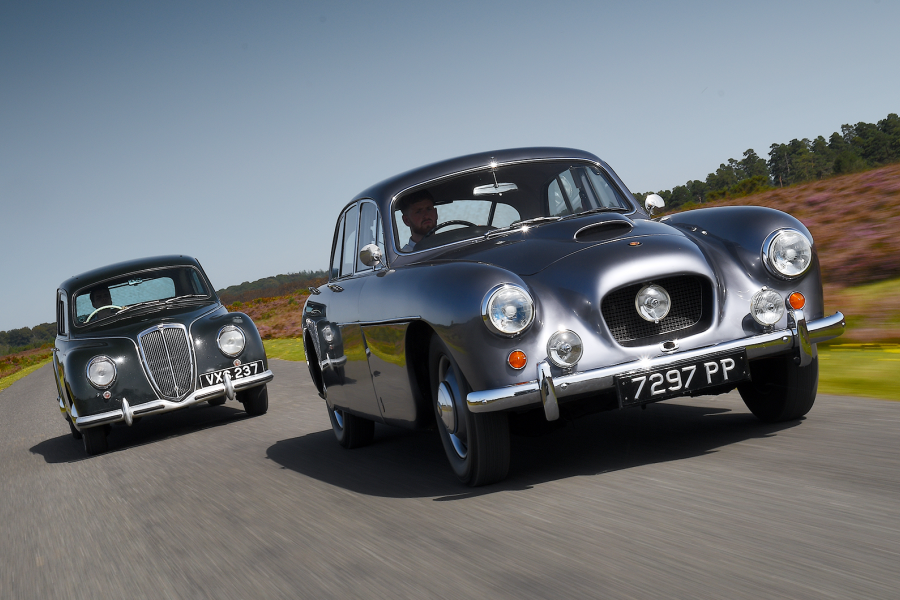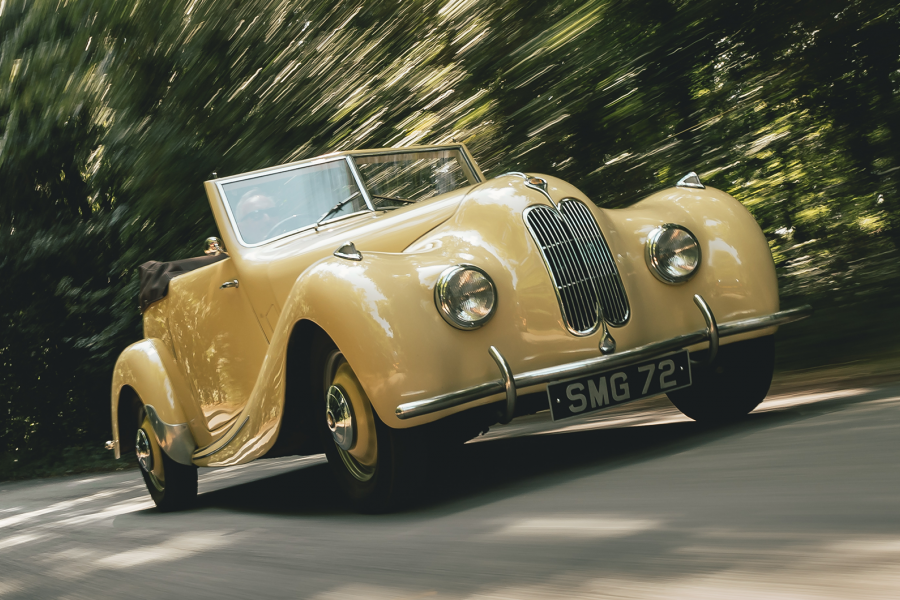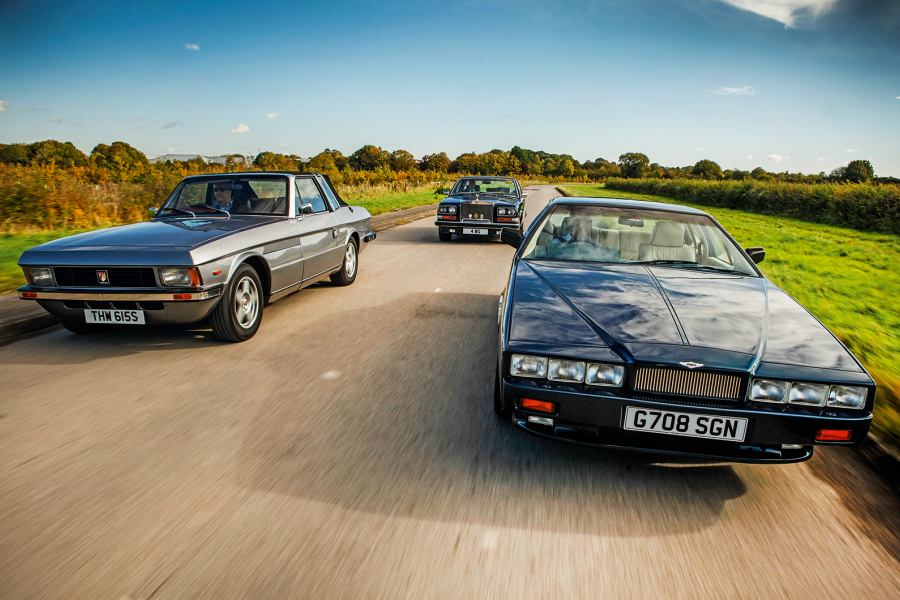This is not a chore, because the Lagonda’s impressive gearchange only seems slightly routine in light of the Bristol’s legendarily sweet mechanism.
This 1954 3 Litre was originally fitted with a column shift but now has a centre change; the lever has longer movements than the Bristol’s, but you can’t catch out its synchromesh.
The Bristol and Lagonda are really saloons powered by sports car engines: the Lagonda’s handsome twin-cam lump even looks slightly lost in the deep bay.
To extract performance from it requires that you rev it harder than might feel strictly prudent at first. In fact, it will happily rev quite a lot higher, and more smoothly, than the Bristol engine.
It also sounds more modern and less fussy doing so, bereft of the ‘grannies in a knitting competition’ sound effects that give the Bristol unit such a distinctive feel, but it is still noisy in view of the car’s luxury aspirations.
Neither engine is overburdened with torque but the Lagonda is much more flexible at low speeds.
Too few people shared David Brown’s dream of a post-war Lagonda with vintage attributes. I have always admired them from afar, but every close encounter makes their lack of commercial success easier to understand.
As a saloon it was not quite roomy enough to be chauffeur-driven, yet too much like hard work for people who wanted to drive themselves, with no power steering or automatic gearbox options.
That David Brown felt the need to slash prices of the 3 Litre range by a third at 1956 motor show time was a telling commentary on the difficulty he was having selling them.
MkIIs, with the floor gearchange, ran from 1956 to 1958, but by then public indifference to the big Lagondas was too much for even David Brown’s organisation to bear and they faded from view with no obvious replacement on the horizon.
DB had not lost interest in the marque but his mind, and money, were elsewhere – mostly with the development of the new DB4.
While 510 of the 2.6 Litre were built, the 3 Litres are much rarer than you might think at 270 examples.
If you accept that subsequent Lagonda-badged cars were really just adapted AstonMartins then the3 Litre is the last ‘real’ Lagonda with links to the great pre-war models. That should count for something, and the £89,000 price-tag attached to this one suggests it might do.
The Bristol is emphatically the nicer car to drive and, arguably, the prettier to look at. But, if I were looking for a ‘period’ four-seater English convertible, the £100,000 price disparity might give me cause to have a suck on this particular lemon.
Images: James Mann
Thanks to SLJ Hackett and Bishopstrow Hotel & Spa
Factfiles
Lagonda 3 Litre Drophead Coupé
- Sold/number built 1953-’58/55
- Construction steel cruciform chassis and floor/bulkheads, aluminium body over wood frame
- Engine iron-block, alloy-head, dohc 2922cc straight-six, twin SU carbs
- Max power 140bhp @ 5000rpm
- Max torque 164Ib ft @ 3000rpm
- Transmission four-speed manual, RWD
- Suspension independent, at front by double wishbones, coil springs rear swing axles, torsion bars, parallel links; lever-arm dampers f/r
- Steering rack and pinion
- Brakes drums
- Length 16ft 4in (4978mm)
- Width 5ft 9½in (1765mm)
- Height 5ft 2in (1575mm)
- Wheelbase 9ft 5½in (2883mm)
- Weight 3527lb (1600kg)
- 0-60mph 15.8 secs
- Top speed 100mph
- Mpg 16-19
- Price new £2957
- Price now £90,000*
Bristol 405 Drophead Coupé
- Sold/number built 1954-’58/43
- Construction steel A-frame chassis with steel, wood and light-alloy body
- Engine iron-block, alloy-head, ohv 1971cc straight-six, triple Solex carburettors
- Max power 105bhp @ 5000rpm
- Max torque 123Ib ft @ 3650rpm
- Transmission four-speed manual with overdrive, RWD
- Suspension: front independent, by upper wishbones and transverse leaf spring, anti-roll bar rear live axle, longitudinal torsion bars, lateral links, A-bracket; telescopic dampers f/r
- Steering rack and pinion
- Brakes drums
- Length 15ft 9¼in (4807mm)
- Width 5ft 8in (1727mm)
- Height 4ft 9½in (1461mm)
- Wheelbase 9ft 6in (2896mm)
- Weight 2660lb (1206kg)
- 0-60mph 13 secs
- Top speed 105mph
- Mpg 19-24
- Price new £3188
- Price now £185,000*
*Prices correct at date of original publication
READ MORE
Bristol 450: Filton’s finned flyer
Behind the scenes of the last days at Bristol Cars
Transatlantic hybrids: Bristol 407, Jensen C-V8 and Gordon-Keeble GK1
Martin Buckley
Senior Contributor, Classic & Sports Car
